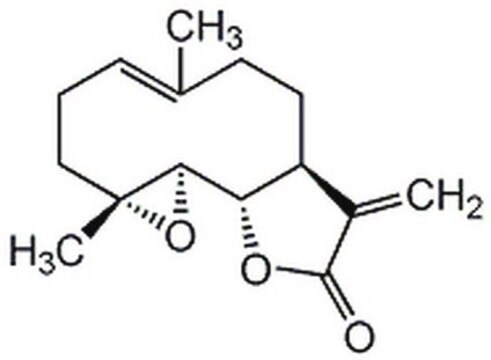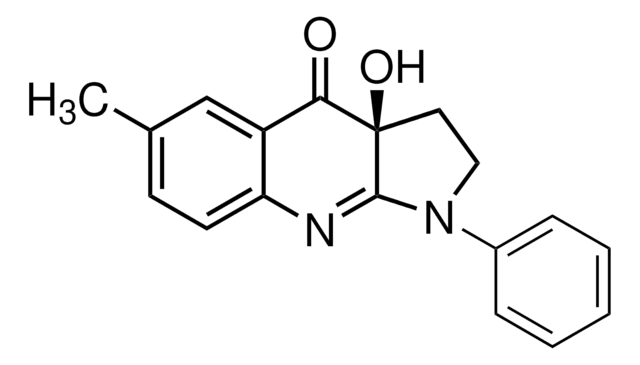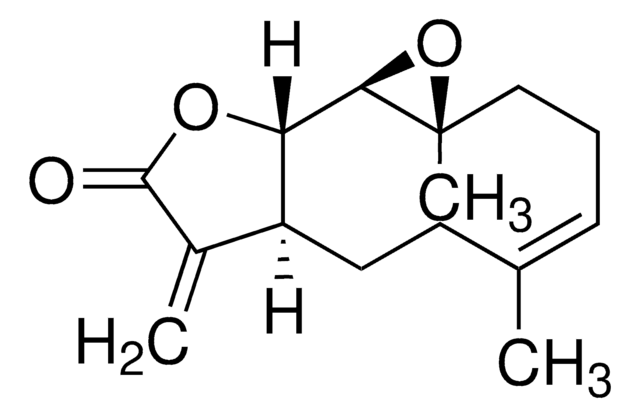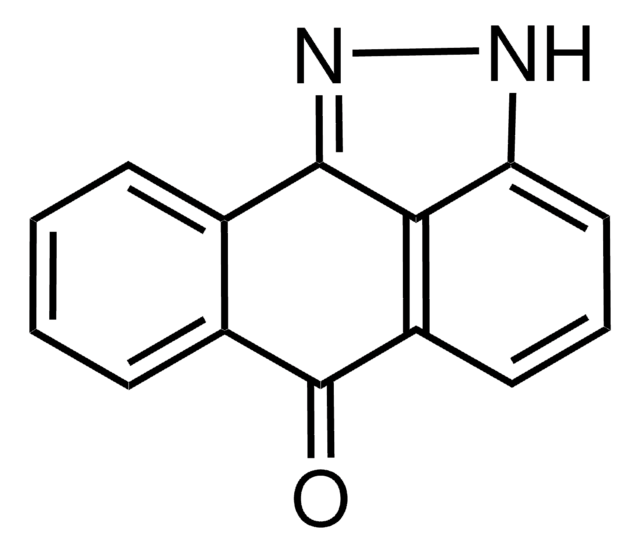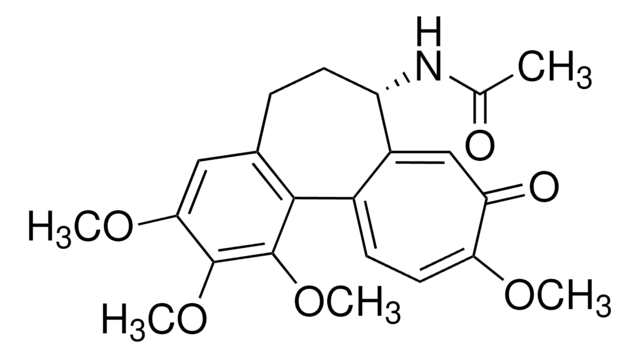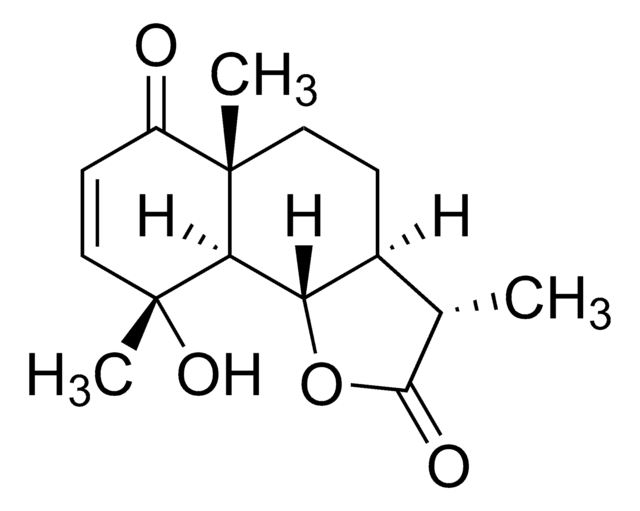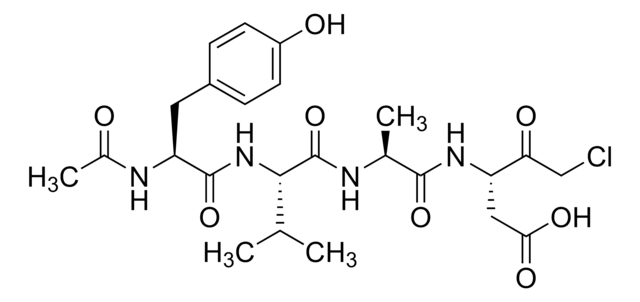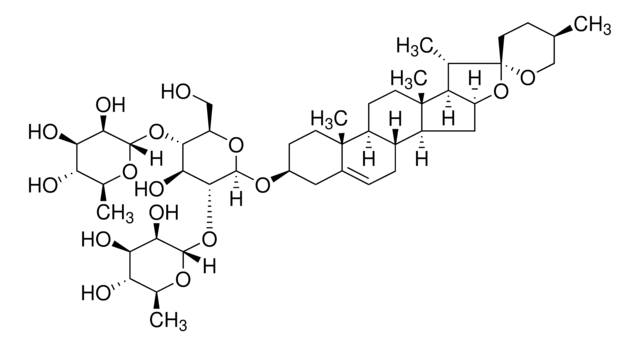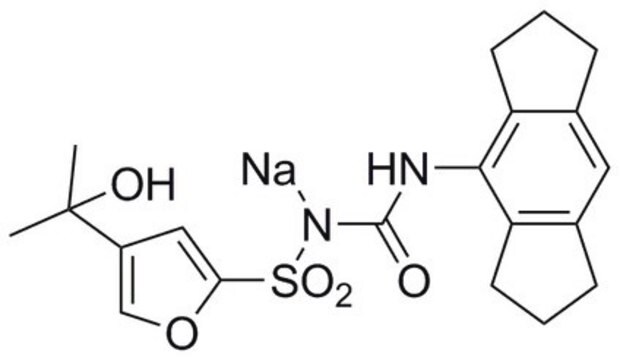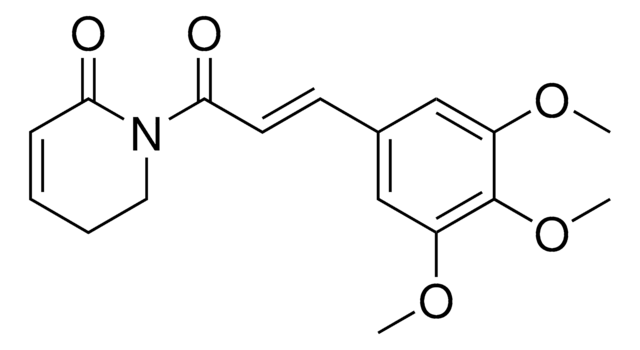About This Item
Recommended Products
Quality Level
Assay
≥98% (HPLC)
form
powder
mp
115-116 °C (lit.)
storage temp.
2-8°C
SMILES string
C/C(CC[C@]12[H])=C/CC[C@]3(C)[C@H](O3)[C@]1(OC(C2=C)=O)[H]
InChI
1S/C15H20O3/c1-9-5-4-8-15(3)13(18-15)12-11(7-6-9)10(2)14(16)17-12/h5,11-13H,2,4,6-8H2,1,3H3/b9-5-/t11-,12-,13+,15+/m0/s1
InChI key
KTEXNACQROZXEV-ZRPLFPEYSA-N
Gene Information
human ... ELA2(1991) , IKBKG(8517) , NFKB1(4790) , NKAP(79576) , NKRF(55922)
Looking for similar products? Visit Product Comparison Guide
Application
- in the crystallization with vasohibin 1 (VASH1) to study tubulin detyrosination inhibition
- as an inhibitor of nuclear factor κ-light-chain-enhancer of activated B cells (NF-κB) and signal transduction and activation of transcription (STAT) inhibitor to study its effects on the cytoadhesion of CD36-binding Plasmodium falciparum-infected erythrocytes (IECD36)
- as a lipophilic agent to study its effects on the production of interleukin?13 and interferon?γ by peripheral blood-derived CD8+ T cells
Biochem/physiol Actions
Other Notes
Signal Word
Warning
Hazard Statements
Precautionary Statements
Hazard Classifications
Skin Sens. 1
Storage Class Code
11 - Combustible Solids
WGK
WGK 3
Flash Point(F)
Not applicable
Flash Point(C)
Not applicable
Personal Protective Equipment
Certificates of Analysis (COA)
Search for Certificates of Analysis (COA) by entering the products Lot/Batch Number. Lot and Batch Numbers can be found on a product’s label following the words ‘Lot’ or ‘Batch’.
Already Own This Product?
Find documentation for the products that you have recently purchased in the Document Library.
Customers Also Viewed
Articles
NF-κB and Inflammation
Cancer stem cell media, spheroid plates and cancer stem cell markers to culture and characterize CSC populations.
Our team of scientists has experience in all areas of research including Life Science, Material Science, Chemical Synthesis, Chromatography, Analytical and many others.
Contact Technical Service